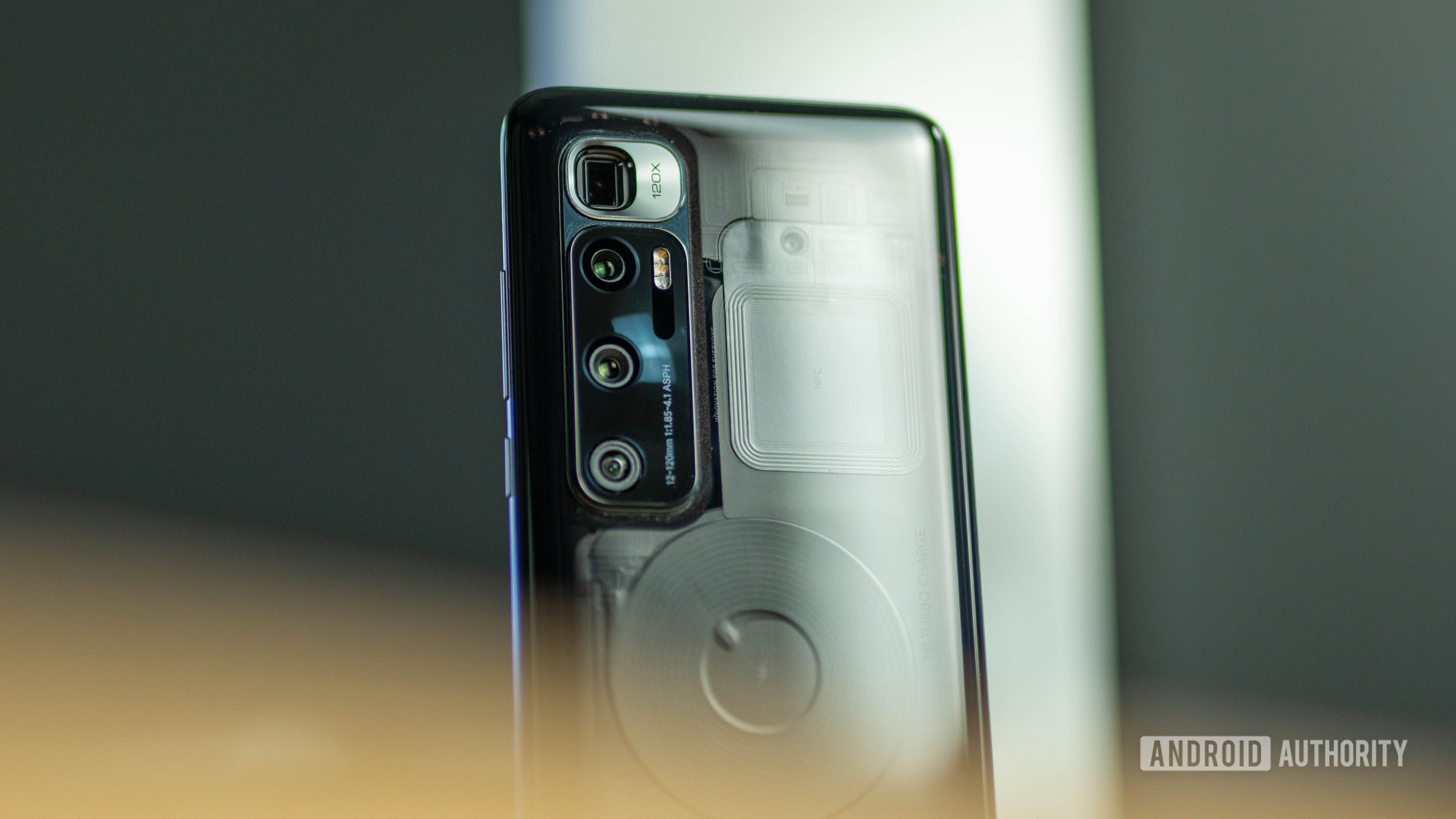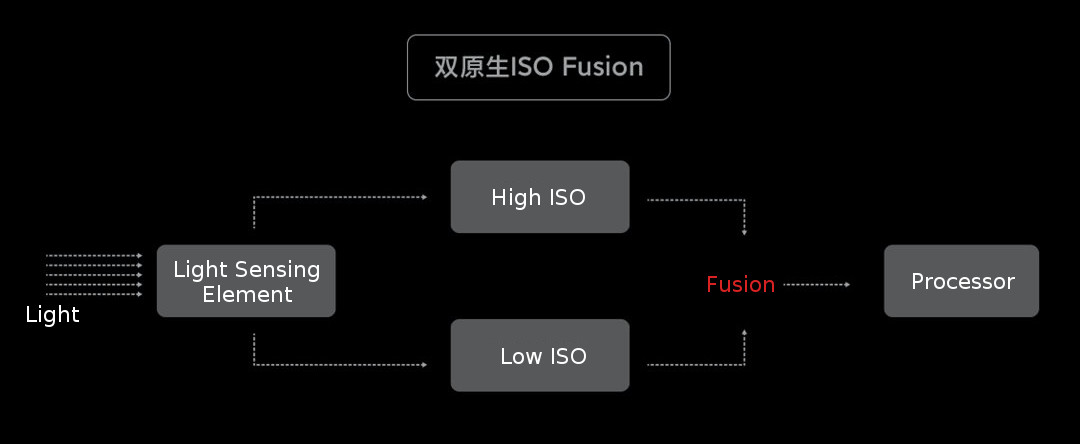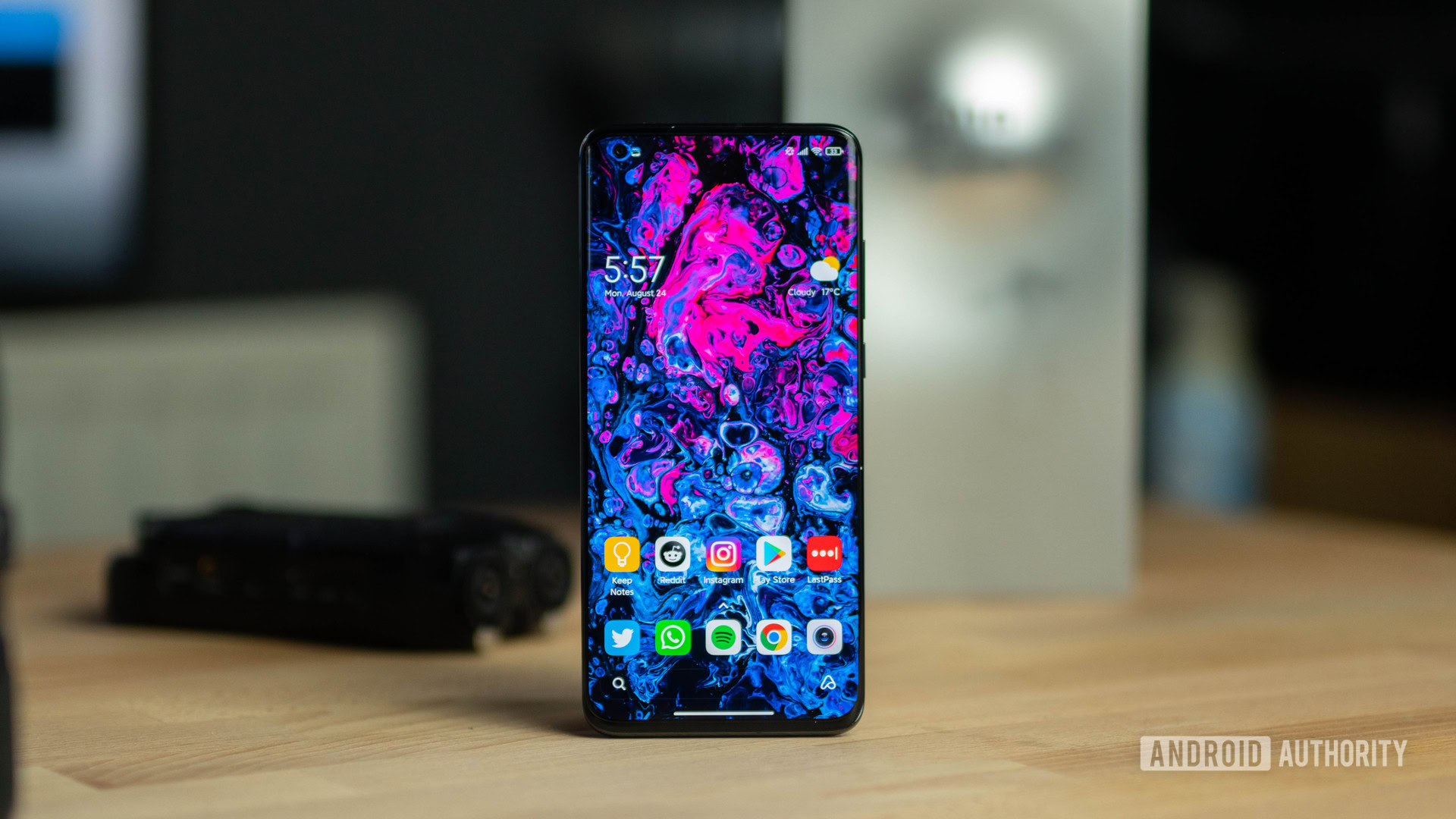Affiliate links on Android Authority may earn us a commission. Learn more.
Testing the Xiaomi Mi 10 Ultra camera and its secret tech

The Xiaomi Mi 10 Ultra is a powerhouse of a handset. The phone contains a number of interesting new features, including crazy-fast 120W charging and a host of new camera features in its quad-lens setup. Unfortunately, the phone is only available in China — at least for now — but we managed to get our hands on one. Today we’re going to take a closer look at the Xiaomi Mi 10 Ultra camera and some of its impressive capabilities.
Xiaomi hasn’t been shy with boasting about all of the Mi 10 Ultra’s various photography accomplishments. Among these features include 8P-lenses, a large 1/1.32-inch sensor, something called a dual-native ISO Fusion circuit, and single-frame progressive HDR. Sounds fascinating, but it’s even more interesting to see what this camera tech can actually do in practice. We’ve put the handset through its paces to see what difference the new camera setup makes — if any.
Xiaomi Mi 10 Ultra camera specs
Before we get into the samples, below is a table that gives us a closer look at how the Mi 10 Ultra camera specs compare to its competitors.
| Xiaomi Mi 10 Ultra | Xiaomi Mi Note 10 | HUAWEI P40 Pro | Samsung Galaxy S20 Ultra |
|---|---|---|---|
| Xiaomi Mi 10 Ultra 48 MP, f/1.9 aperture, 1/1.32" sensor, 1.2µm pixels | Xiaomi Mi Note 10 108MP, f/1.7 aperture, 1/1.33" sensor, 0.8µm pixels | HUAWEI P40 Pro 50 MP, f/1.9 aperture, 1/1.28" sensor, 1.22µm pixels | Samsung Galaxy S20 Ultra 108 MP, f/1.8 aperture, 1/1.33" sensor, 0.8µm pixels |
| Xiaomi Mi 10 Ultra 5x periscope zoom 48 MP, f/4.1 aperture, 1/2.0" sensor, 0.8µm pixels | Xiaomi Mi Note 10 5x telephoto zoom 8MP, f/2.0 aperture, 1.0µm pixels | HUAWEI P40 Pro 5x periscope zoom 12MP, f/3.4 aperture | Samsung Galaxy S20 Ultra 4x periscope zoom 48 MP, f/3.5 aperture, 1/2.0" aperture, 0.8µm pixels |
| Xiaomi Mi 10 Ultra wide-angle 20MP, f/2.2 aperture, 1/2.8" sensor, 1.0µm pixels | Xiaomi Mi Note 10 wide-angle 20MP, f/2.2 aperture, 1/2.8" sensor, 1.0µm pixels | HUAWEI P40 Pro wide-angle 40MP, f/1.8 aperture, 1/1.54" sensor | Samsung Galaxy S20 Ultra wide-angle 12 MP, f/2.2 aperture, 1.4µm pixels |
| Xiaomi Mi 10 Ultra 2x telephoto zoom 12MP, f/2.0 aperture, 1/2.55" sensor, 1.4µm pixels | Xiaomi Mi Note 10 2x telephoto zoom 12MP, f/2.0 aperture, 1/2.55" sensor, 1.4µm pixels | HUAWEI P40 Pro Time-of-flight | Samsung Galaxy S20 Ultra Time-of-flight |
A quick look at general quality
For a comparison point, we have the company’s previous photography flagship, the Mi Note 10. This was the first phone boasting a 108MP main sensor and — just like the Mi 10 Ultra currently does — previously topped DxOMark’s rankings for a short period. To gain a general perspective, we also compared the handset to the excellent HUAWEI P40 Pro and Samsung Galaxy S20 Plus.
To start, the Mi 10 Ultra boasts a reasonably large 48MP 1/1.32 inch main image sensor with large 1.2µm pixel sizes. That’s not far off from the HUAWEI P40 Pro’s 1/1.28-inch sensor and is right around the Galaxy Note 20 Ultra’s 108MP 1/1.33-inch sensor, but with larger pixels. In theory, this lends itself to high levels of light capture and detail. Especially in combination with the f/1.9 aperture lens and 8P lens, and the default option to use pixel-binning to combine pixel data for brighter 12MP snaps.
Based on my time with these phones, my general opinion of all three is very good. Xiaomi’s colors tend to end up a tad oversaturated — much like Samsung — and the exposure can be a little too bright or dark sometimes. Overall, it’s a very capable shooter devoid of any major issues — unlike the P40 Pro’s frustrating warm tint. The detail capture really impresses me, though. It’s far superior to the 108MP Mi Note 10. Once again highlighting that sheer megapixels don’t always result in more detail.
Related: Why camera sensor size is more important than more megapixels
There’s very little sign of post-processing when taking photos in good lighting. Mi 10 Ultra images are soft, yet detailed — often rivaling what you’ll see from the HUAWEI P40 Pro. Bokeh edge detection is also excellent. So, how has Xiaomi ended up producing such good results?
Xiaomi has made a big deal about the quality of the lenses used for the wide-angle and main sensors, promising lower levels of distortion as a result. High-quality lenses are hugely important for maximizing the detail and light captured by a sensor.
Along with focus, there are two types of distortion typically seen in smartphones — lens warping from edge distortion and chromatic aberrations, which is purple halos around highlights. So, let’s see if we can spot any improvements with the move to an 8P lens from the Mi Note 10’s 7P main lens.
Lens distortion was a major problem when we closely examined the Mi Note 10, and there’s a definite improvement with the Mi 10 Ultra. These bright overcast shots make it easy to spot aberration with the older 7P lens, which isn’t apparent with the Ultra’s 8P update. Likewise, lens distortion at the frame edges is also far less pronounced, ensuring high detail capture right up to the edge of the frame with the Ultra. This is a major improvement.
Xiaomi has fixed the lens issues that plagued the Mi Note 10.
There’s less difference between the wide-angle sensors of these two cameras, mostly because they look to be using virtually identical parts. blurred detail at the frame edges remain as it’s part of the wide-angle look, but the newer model seems to capture more light. This is another point Xiaomi makes in its post, and it marginally improves image quality in some situations.
So far so good for the Xiaomi Mi 10 Ultra.
Dual-native ISO Fusion
ISO is part of the “exposure triangle” governing how much light your phone’s sensor can capture. For a quick background, a higher ISO or sensitivity helps improve exposure at the cost of noise. That’s useful in very low light, but you’d want a low ISO in good daylight to capture the cleanest shots. As the aperture is fixed in smartphones, varying ISO and shutter speed are the only ways to adjust light capture.
Related: Photography terms explained — ISO, aperture, shutter speed, and more
Xiaomi implements a novel solution in the Mi 10 Ultra called dual-native ISO Fusion. This technique takes two images with a high and low ISO simultaneously. This is actually a hardware feature where the images are fused directly within the image sensor. This produces an output with a higher dynamic range and lower noise than a standard picture.

We can test this feature by shooting images with tricky exposures, and where extreme ISO levels are often required. The images below are shot with HDR disabled to remove that from the equation.
For the first image taken in relatively low light, I fixed the shutter speed and ISO on the Mi 10 Ultra and Mi Note 10. Despite their similar sensor size and aperture, we can see that the Ultra model does indeed produce a cleaner image with more dynamic range. Note the brighter colors and more detailed highlights, while still retaining the deep shadows. It’s definitely a more dynamic image.
ISO Fusion provides a subtle boost to dynamic range.
In the second example, colors are virtually identical this time as well as the exposure and white balance. However, shadows are deeper and more realistic with the Ultra. There’s less noise, and more detail captured. Although, Mi Note 10 shadow gradients are worse at the frame edges, so some of this is likely down to the inferior lenses too.
Overall, this ISO Fusion technology produces a subtle improvement than a radical overhaul of image quality. Still, it definitely results in better images than previous Xiaomi handsets, especially in scenarios with more extreme lighting.
A new HDR formula
In addition to dual-ISO processing, the Xiaomi Mi 10 Ultra uses single-frame progressive HDR (Stagger HDR) technology. Rather than taking successive frames with different exposures, Xiaomi captures these three exposures from a single-frame capture. This is accomplished with three sets of read-out circuits to capture short, medium, and long exposures.
Xiaomi claims that this technique cuts down on shooting times, reducing the appearance of ghosting, and captures a higher dynamic range than the more common three-frame synthetic HDR. So, let’s put that to the test with some scenarios that are tricky to expose correctly.
Xiaomi’s new HDR technology appears to work well compared to the Mi Note 10. There’s much more color and detail picked out from the high exposure window in the first shot. The level of dynamic range is definitely improved, so it certainly looks like the single-frame method works well.
Similar results are obtained using HDR in low light too. Again, the second examples display far more dynamic range for the Mi 10 Ultra, producing deep shadows while preserving specular highlights. The Ultra’s single-frame HDR also provides more vivid colors and sharper detail retention.
The major difference in these HDR techniques is observable by comparing them to the non-HDR equivalents from earlier. The older Mi Note 10’s HDR clearly balances out the highlights and evens out the shadows. But it’s very grainy and more washed out than the non-HDR image.
The Mi 10 Ultra suffers from no such blur or grain and has a far stronger HDR look. However, it does suffer from more notable signs of sharpening and noise reduction when cropping in. We’ve actually seen this type of technology and results before from HUAWEI, which used multi-pixel exposures as early as the HUAWEI P20 Pro.
Overall, the new HDR technology is better in a wider range of scenarios. But it does have small trade-offs for detail and sharpening.
Zooming in
Finally, a quick look at zoom. Xiaomi has made the move to a periscope zoom camera with a 120x zoom tagline. We’ve already explored the 120x zoom and came to the conclusion that it’s not particularly useful. The level of detail just doesn’t hold up at such long distances. Instead, we’ll focus on the 5x camera.
The move from telephoto to a periscope 5x zoom lens clearly pays dividends for the Mi 10 Ultra. The differences aren’t largely noticeable at full frame — bar some slightly better exposure for the new device. However, a small crop reveals notable differences in detail capture — an area where the move to periscope comes into its own.
The Mi 10 Ultra’s level of detail is not quite as sharp as the HUAWEI P40 Pro periscope lens. That said, HUAWEI’s P40 Pro 5x option still suffers from red tint and heavier processing after all these months. The periscope camera produces impressive results for Xiaomi overall, providing a softer and more natural image than many other zoom cameras out there.
Xiaomi Mi 10 Ultra camera: The verdict
Between my experience and our full review, we’ve taken plenty of great looking pictures with the Xiaomi Mi 10 Ultra. The handset offers great colors, plenty of detail, and is good in low light too. It’s a genuinely great camera setup that can certainly rival the industry’s finest.
Xiaomi’s new camera technologies and improvements certainly help make the Mi 10 Ultra a consistent shooter across a range of environments. While these might not be as headline catching as a 108MP camera, focusing on smaller details like lenses and innovative new approaches to traditional problems produces far better results. Hopefully, Xiaomi’s photography efforts continue down this path.
The Mi 10 Ultra can hang with the best camera phones, but you sadly can't buy one outside of China.
That said, the Xiaomi Mi 10 Ultra isn’t flawless. The main sensor occasionally struggles with focus at both long and short distances. So, it’s unreliable for taking a quick action shot and sometimes struggles to get the right exposure in HDR environments. The camera’s night mode is also a bit disappointing, producing blurry, dark shots compared to its competitors. However, the biggest shame is that the phone isn’t officially available outside of China.
